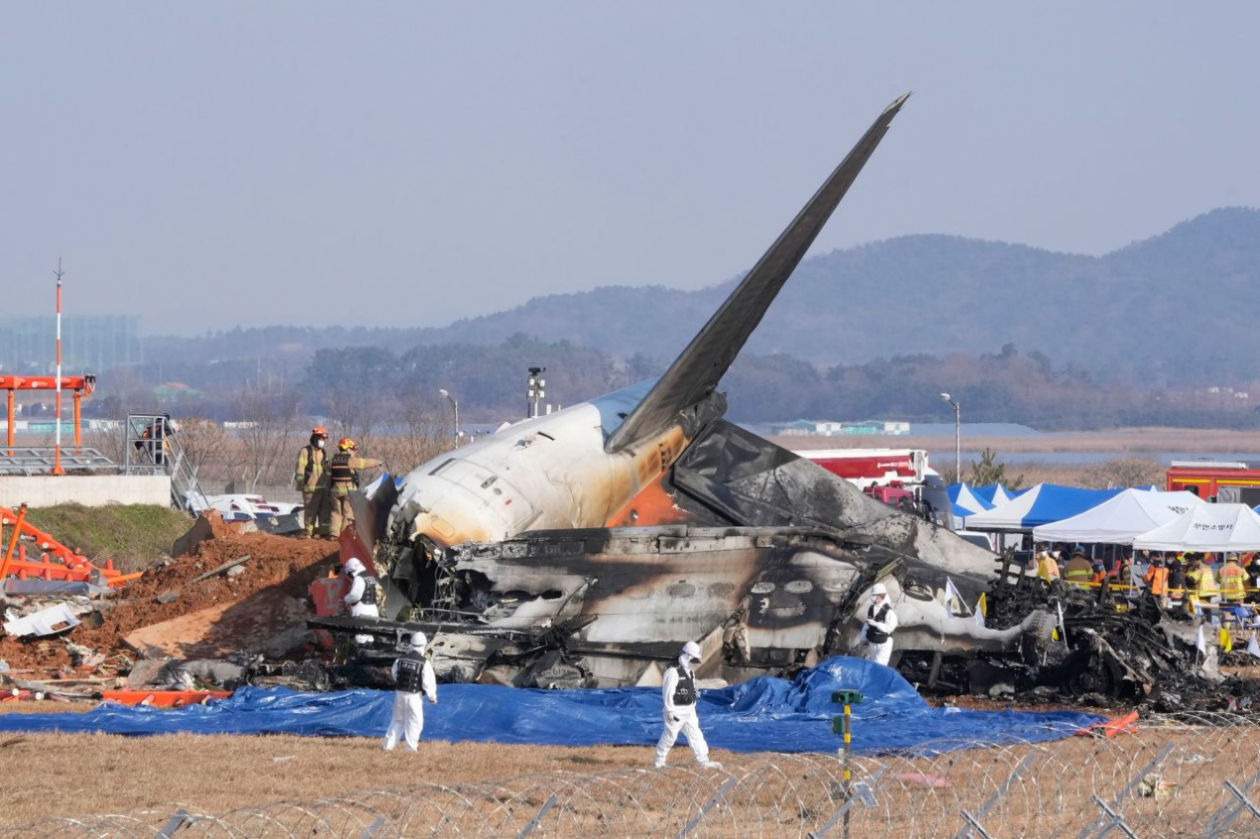For the 2024 of December 29 in the South Korean Muan International Airport of a major crash, public opinion on the cause of the accident tracking reports and analysis continue. South Korea’s“Chosun Ilbo” said that in addition to the plane fault, short runway length, lack of awareness of the risk of bird strike, airport operation experience is not mature, and so may have contributed to the tragedy.

Muan International Airport, Fire and rescue workers work at the site of the wreckage of the airliner on December 29,2010. Photo: US media
According to Chosun Ilbo, Wu’an Airport is close to the west coast of South Korea’s migratory bird habitat, in the early days of the airport construction was raised questions. A report published in 2020 said that airliners were“At high risk of bird strikes” and suggested specific solutions such as installing a boom or siren and using lasers or flags to reduce the likelihood of bird strikes, however, these measures have not been strictly implemented because the runway expansion project has not been completed. South Korea’s joongang Daily quoted Seoul National University Professor Choi Chang-long as saying that the Incheon International Airport had introduced bird-chasing radars to monitor the movement of migratory birds, but many other airports in South Korea do not use such a system.
To add insult to injury, Wu’an Airport’s limited bird-repellent measures have encountered manpower problems. “Korea daily” disclosed that the airport has four responsible for the birds away from the airport staff, they need to find the birds and the control tower communication. These birdcatchers usually work two shifts. South Korean media said the crash occurred, only a bird in the post. It is reported that the number of bird repellent personnel at Wu’an Airport has been less than the airport of the same size.
Why did the plane fail to hover and assess in accordance with normal operating procedures, but chose to“Belly Landing”? The issue continues to be the focus of attention. Media said the plane crashed because of bird strike caused the failure of two engines at the same time, or whether there are other major risks to be further investigated. Another special circumstance of the accident is that the aircraft did not lower the landing gear, flaps and other auxiliary landing devices, used to slow down the engine thrust device, although open, but did not appear to start. The Chosun Ilbo newspaper speculated that the bird strike may have caused both engines and Auxiliary power unit to fail, shutting down power to the plane, after landing, the engine’s thrust reversers, flaps, and brakes all fail to work properly. Other analysts said the crew may have mishandled the situation in a panic, “Even if the fuselage landed, as long as there is an engine working, these speed control devices can work properly.”.
There are also critics of the airliner and the runway outside the hard structure of the collision caused serious consequences. However, the South Korean Ministry of Land, Infrastructure and Transport (Korea) said at a press conference that the concrete structure at the heading station at the end of the runway at Wu’an Airport complied with the relevant installation requirements, Yonhap news agency reported.
The Ministry of Land, Infrastructure and Transport (Korea) flight recorder from the black box of a crashed Jeju Airlines flight will be sent to the US for analysis due to partial damage, Yonhap news agency reported. The department explained that the flight recorder of the plane had been found with the connectors detached. After technical discussions, the Ministry of Land, Infrastructure and Transport (Korea) board concluded that it could not extract its data in the country. It is difficult to repair or replace existing connectors, and experts point out that forcing them on can cause data loss.